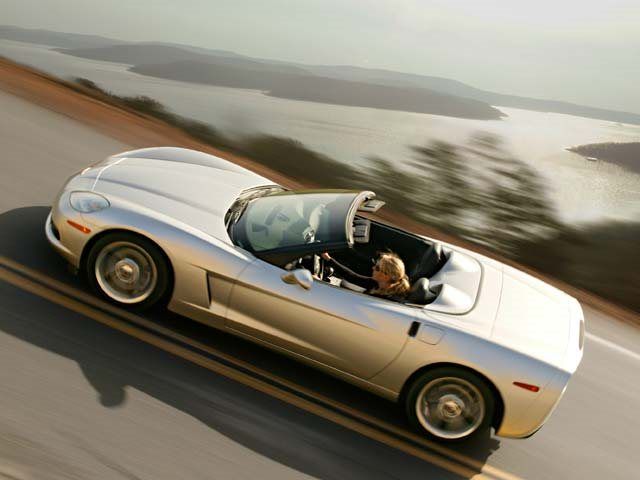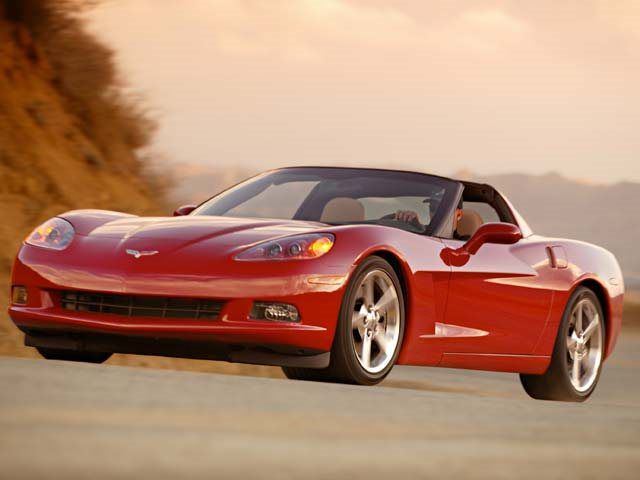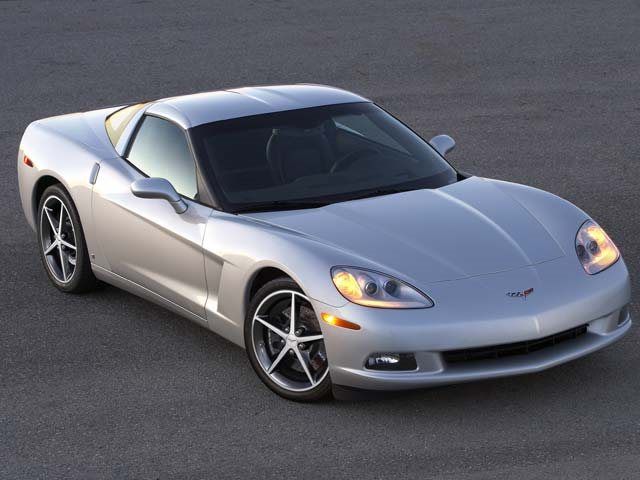When the C6 Corvette was unveiled in 2004, it was the first time in almost 40 years that its headlights were not hidden under pop up covers. Chevrolet explained this about face due to the desire to give the car a cleaner face and to make the lights less technically complicated. It was a logical reason with one tradition disappearing while another one returned; the exposed headlights seen on the original C1. Like its predecessor, the C6 is protected by a big front bumper that's the same color as the body.
Only now it has a more narrow air intake at the bottom and a very modest, almost invisible triangle-shaped bulge at the center of the hood, which is a typical Corvette design cue. The back-end of the car looks to be higher than the front, giving the car a unique look and feel. The surface at the back is flat and the fuel door is just behind the left hand door. The taillights are also rounded and embedded in the back of the car, just like in previous generations. Larger wheels and shorter overhangs contribute to a more purposeful design. Rear-end styling also features four exhausts in the rear diffuser.
Its development consisted of many types of simulations in order to achieve the proper aerodynamic balance and sleek design with more than 400 hours of wind tunnel testing. The results clearly paid off as the C6 has also had a race-winning experience at the 24 Hours of Le Mans with a win in the GTE Pro class. In terms of everyday conveniences, the C6 coupe's removable roof panel can be stowed in the luggage area. The convertible also features a choice of either an easy-to-operate fabric manual top or a power-operated soft top. And as design tradition goes, the dual cockpit interior theme continues. The seat frame is also made of a two-layer composite.
Among many of the new electronic technologies are GM's Keyless Access with Push Button Start and an updated head-up display which projects information onto the windscreen. At launch, the C6 was powered by the automaker's then new LS2 6.0-liter V8, which was based on the Gen IV small-block. Capacity was increased, components were improved and output peaked at 400hp and 400 lb-ft of torque. A six-speed manual and optional Hydramatic four-speed automatic transmission were also both upgraded and strengthened to accommodate the LS2's higher torque.
GM's overall Corvette chassis and running-gear philosophy also continued. Vehicle weight was significantly reduced, despite features such as larger wheels and tires, more robust brakes and increased body sound-proofing materials. The suspension configuration was also carried over from the C5, but with all new components, while the Traction Control and Active Handling systems operate as an unobtrusive safety net for spirited driving. Most importantly, however, the C6 delivers stunning performance. Both manual and automatic standard models accelerate from zero to 62 mph in 4.2 seconds and have a top speed of 186 mph.
Fitted with the optional Z51 Sport Package, this acceleration time is cut down to 4.1 seconds. For buyers who feel that the base C6 isn't powerful enough are fortunate to have some incredible upgrades. As always, the price increased, but it's still impossible to deny the power to dollar ratio offered by the Z06 and ZR1. The track-oriented Z06 arrived on the scene back in 2006 and was powered by a new 7.0-liter small-block V8 that produced 505hp. Other changes include a dry sump oiling system and a body frame constructed from aluminum instead of steal. All told, this cut nearly 140 pounds from the standard car's weight.
In 2010, the Grand Sport was unveiled, replacing the Z51 package. It received several components from the Z06 such as the front splitter, rear spoiler and brakes. In addition, it has wider front and rear fenders along with 'Grand Sport' badges. There are also unique 18-inch front and 19-inch rear wheels. And then there's the ZL1. Designed and engineered to run with the world's best supercars, the ZL1 is powered by a modified version of the LS3 V8, newly designated LS9. It produces an incredible 638hp and 604lb-ft of torque and is the most powerful, expensive ($112,600) and quickest production Corvette ever built.
Engineers are now working on the next generation Corvette, the C7, which is expected to hit the market sometime in 2014. The C6 has, by and large, been a phenomenal success and its successor has some very large - and historic - shoes to fill.



